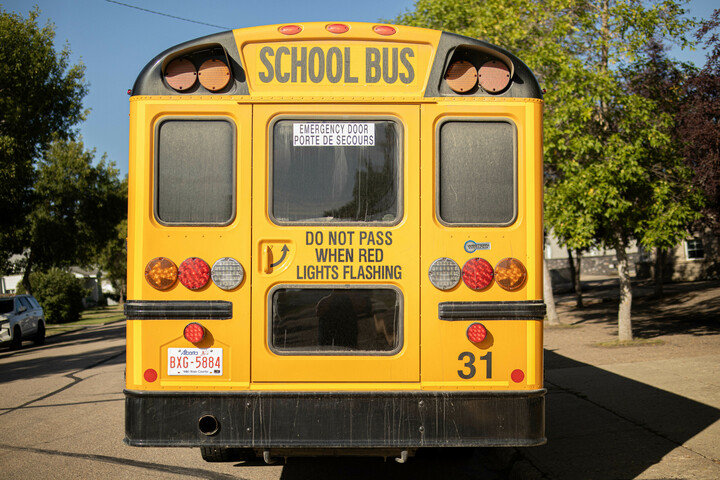
Ensuring that students arrive at school and return home safely is a shared responsibility. Northern Lights Public Schools (NLPS) is asking for the community's help to address a significant safety concern: flybys, which occur when vehicles illegally pass a stopped school bus with its red lights flashing and stop arm extended.
“The safety of our students is at stake, and we need everyone on the road to remain vigilant. Flybys are not just violations—they put the lives of our children at serious risk,” said Board Chair Karen Packard. “Despite continuous efforts to raise awareness, drivers are still ignoring the flashing red lights on school buses, and near-miss incidents happen far too often. This must stop. ”
Flybys are reported almost daily by school bus drivers in Bonnyville, Cold Lake, Lac La Biche, and surrounding areas.
“Drivers need to remember that the flashing red lights and extended stop arm mean STOP,” said Packard. “Not stopping could result in tragedy for one of our students and their family.”
Drivers who do not stop for a bus with its lights flashing could receive a $567 fine and lose 6 demerit points from their license. The division’s Student Transportation works with local law enforcement by reporting fly by “hot spots” and sharing video of offenses when it is available.
While some buses are equipped with external cameras that record flybys, not all of them have this technology. The NLPS Board of Trustees continues to advocate for mandatory external cameras on all school buses and secure funding to make this essential safety measure a reality.
“We believe it is important for all buses to have this equipment so that drivers who continue to put our children’s lives in danger are held accountable for their actions,” said Packard.
This year School Bus Safety Week takes place October 21-25 and the focus is on “Bus Rule - Be Clever, Dress for the Weather,” highlighting the importance of students dressing appropriately for the weather conditions.
“Sometimes students think they don’t need a toque or mittens because they won’t be waiting at their bus stop for very long, but buses can be delayed, especially in the winter,” explained Transportation Director Matt Richter. “There is also the potential for buses to break down and with a shortage of spare buses and drivers, it could get pretty cold on that bus while we find a replacement to pick up the students.”
Another key concern for bus safety is ensuring students remain seated while the bus is in motion. Moving around can lead to injuries if the bus needs to stop suddenly or an accident occurs.
“If a driver has to brake suddenly, anyone who is standing or moving around the bus could fall or collide with something or someone,” said Richter. “It also creates a distraction for our drivers when they need to be focused on the road.”
Transportation staff have been busy this October delivering the division’s rideSAFE program, which teaches Kindergarten to Grade 6 students how to safely ride the bus. This combination of classroom instruction and practical exercises helps reinforce bus safety rules, like staying seated and knowing how to evacuate in an emergency.
Drivers can also help keep students safe on their way to and from school by doing the following:
- Be alert for students at bus stops: Slow down when approaching bus stops and be cautious when students are boarding or exiting.
- Avoid parking in bus loading zones: Do not block designated bus areas to allow for safe loading and unloading.
- Respect school zones and crosswalks: Always be mindful of reduced speed limits and student crossings, especially in the mornings and afternoons.
"By working together, we can make sure every student has a safe journey to school and then back home at the end of the day,” said Packard.